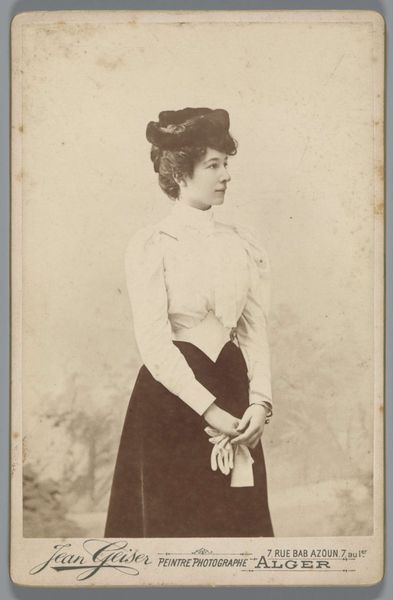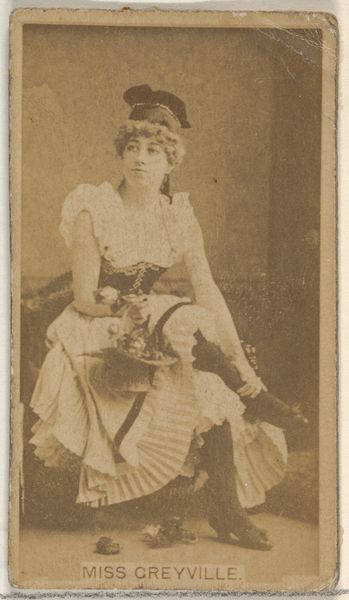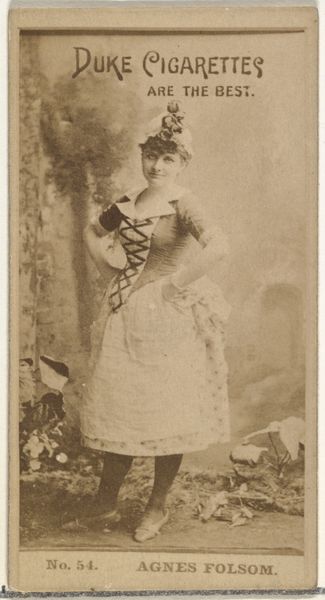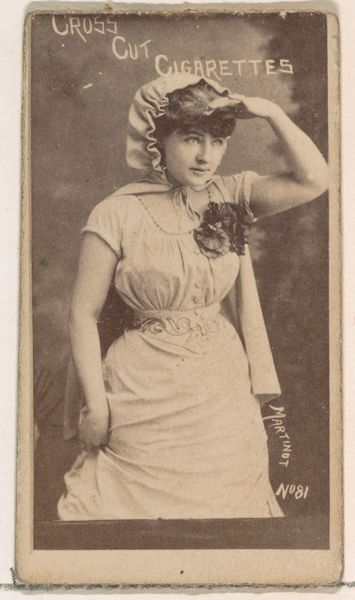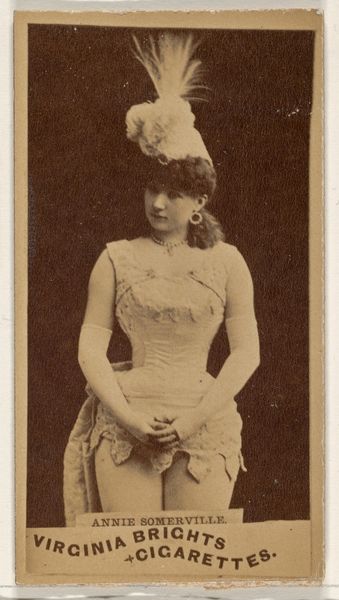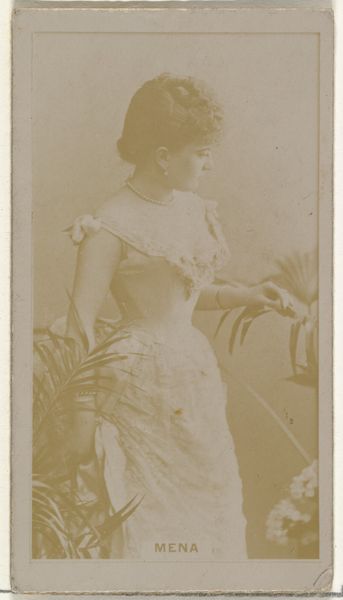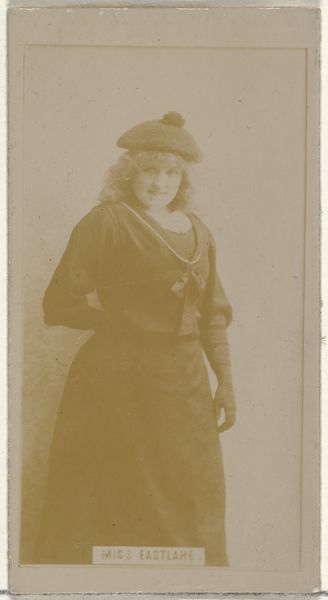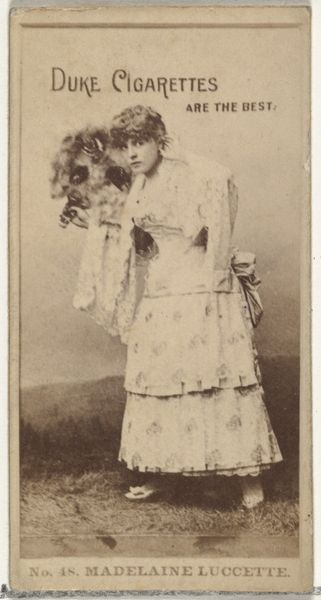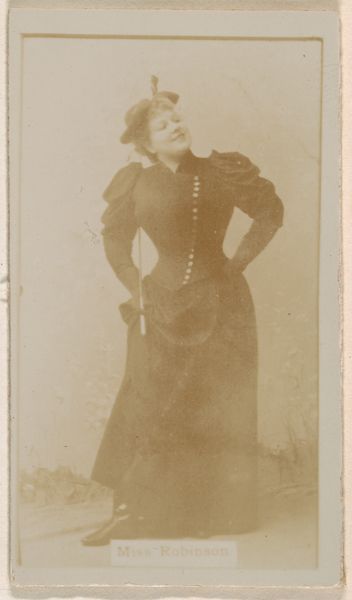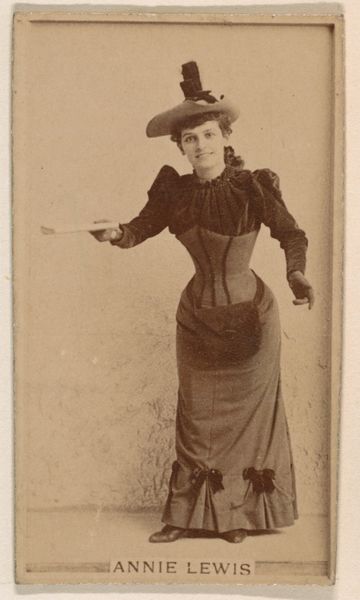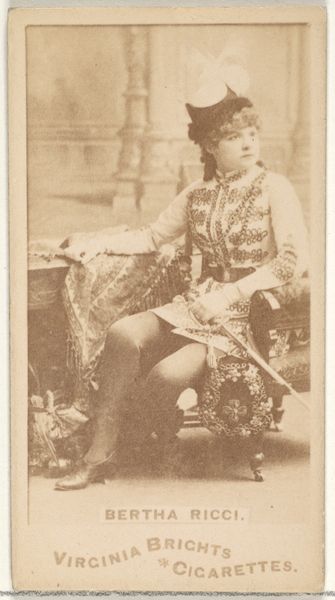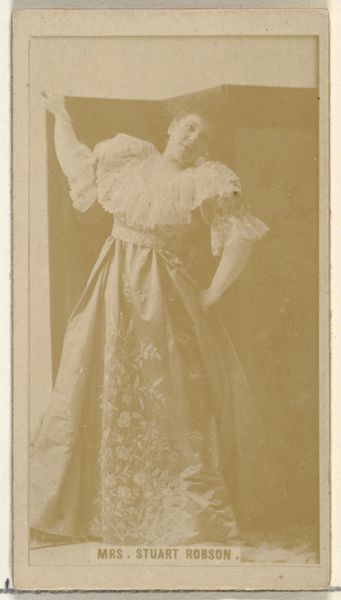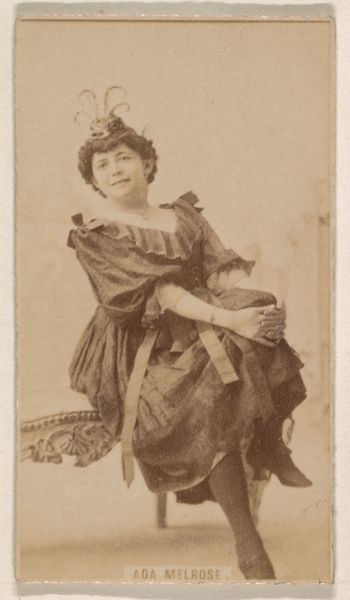
photography
#
portrait
#
photography
#
coloured pencil
Dimensions: height 90 mm, width 58 mm, height 105 mm, width 63 mm
Copyright: Rijks Museum: Open Domain
Curator: Looking at this captivating portrait of "Marie Witsen als jonge vrouw (Algiers)", captured sometime between 1860 and 1915 by Jean Geiser, one can't help but be drawn into the subject’s presence. Editor: Yes, it’s interesting how photography at this time could both reveal and conceal. She projects a quiet defiance, almost daring the viewer to judge her. There’s something unsettlingly performative about the photograph. Curator: The photograph provides insight into the intersectional layers of representation, especially considering Witsen was in Algiers. This prompts questions regarding power dynamics between the photographer, the subject, and the colonial context in which this photo was created. Were any indigenous people captured in these same portraits? How do portrait studios engage with those of high or low classes? Editor: Exactly. Studios like Geiser’s played a crucial role in shaping the visual culture and propagating particular views, even colonial ideas. Think of it – Algerians themselves might not have had the same access or agency in crafting their self-representation. Curator: We see a performance of bourgeois respectability—the hat, the dress—that speaks to a desire for social standing. I find myself wondering about the ways gender roles dictated pose, style, and setting. She is constrained. The artist has staged a specific construction of femininity. Editor: But there is also a gaze offered to the photographer, the photographer whose very place of business is listed proudly in this "Peintre Photographe," suggesting artistic and economic value as well as class privilege. These elements become inextricably tied to art, as does the role of photography in capturing likenesses. Curator: Precisely! I'm intrigued to see if anyone in this woman's life looked at this portrait and understood the role they played in perpetuating it as a work of art for a social record. Editor: A really fascinating snapshot into how art, representation, and social order intertwine during a period of enormous global transformation.
Comments
No comments
Be the first to comment and join the conversation on the ultimate creative platform.
